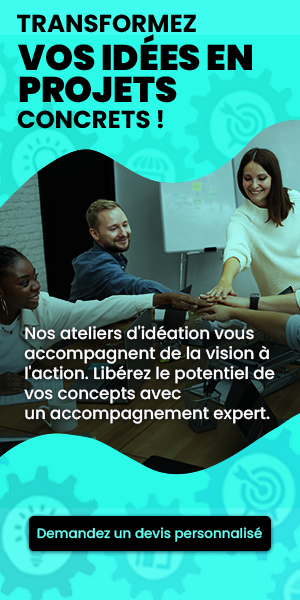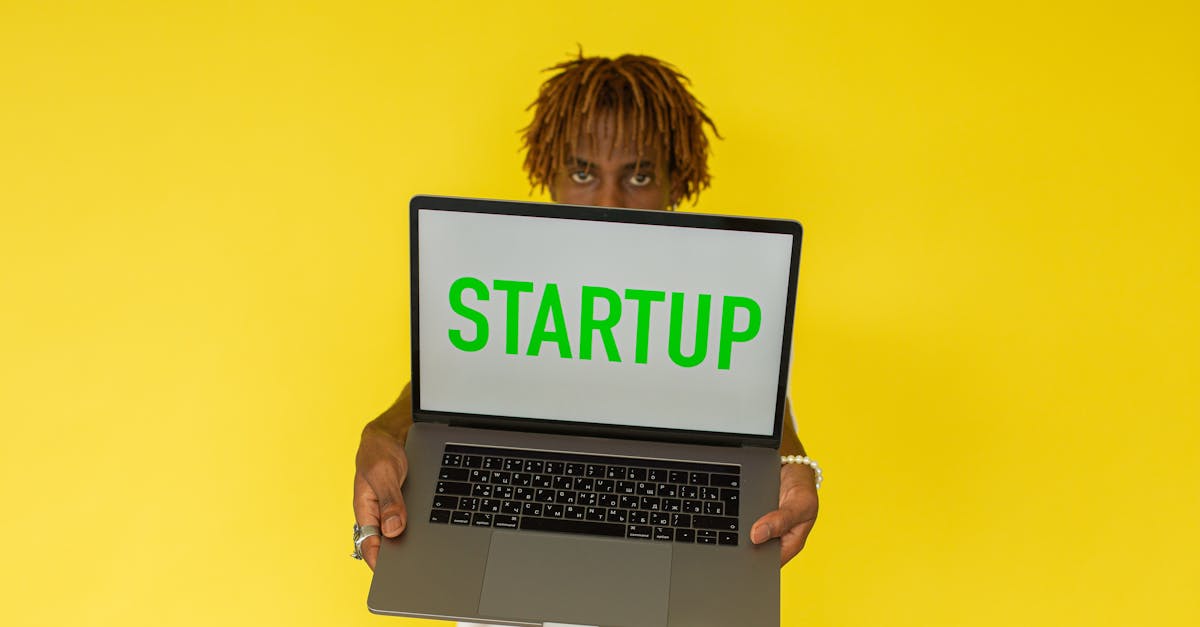Design thinking revolutionizes the way we approach complex problems. By combining creativity and methodology, it offers innovative solutions tailored to real needs. This article explores in depth the different facets of design thinking through a selection of must-read materials. Discover how this approach can transform your projects and stimulate your creativity. Through concrete examples and practical tools, dive into the heart of this dynamic method. Whether you are a novice or an expert, this guide will provide you with valuable insights. Get ready to redefine your thinking with design thinking.
🔥 Nous recommandons Ideamap
Ideamap est l’outil idéal pour un brainstorming ou un projet collaboratif. Grâce son interface facile et à ses fonctions IA, Ideamap booste votre créativité tout en favorisant une meilleure organisation de vos idées pour atteindre vos objectifs.
The Foundations of Design Thinking
Design thinking is a user-centered approach that aims to solve problems creatively and innovatively. Originating from the field of design, this method has expanded to various sectors, including business, education, and technology. One of the pillars of design thinking is empathy, which involves deeply understanding the needs and motivations of users. This empathy allows for defining real problems before seeking solutions. The D.school at Stanford is one of the most renowned institutions for teaching and promoting this methodology.
Another essential aspect is collaboration, which plays a crucial role in design thinking. Working in diverse teams allows for combining different perspectives and skills, thus enriching the creative process. For example, a team including designers, engineers, and marketers can approach a problem from various angles, resulting in more comprehensive and innovative solutions.
Design thinking generally unfolds in five stages: empathy, definition, ideation, prototyping, and testing. Each stage is interconnected, forming an iterative cycle that continuously refines the proposed solutions. This flexibility is one of the reasons why design thinking is so effective in changing and complex environments.
Companies like IDEO have popularized design thinking, demonstrating its effectiveness through various successful projects. Their case studies show how this approach can transform abstract ideas into tangible and useful products. By adopting design thinking, organizations can not only innovate but also create a culture of continuous improvement and creativity.
In 2025, design thinking continues to evolve, integrating new technologies and methods to remain relevant in the face of contemporary challenges. Digital tools like Miro and Figma facilitate collaboration and prototyping, making the process more agile and effective. Additionally, integrating UX design allows better alignment of solutions with the final user experience.
In conclusion, the foundations of design thinking rest on a deep understanding of users, interdisciplinary collaboration, and a flexible iterative process. This method provides a robust framework for addressing and solving complex challenges in an innovative and human-centered way.

The Essential Tools for Practicing Design Thinking
To effectively apply design thinking, it is crucial to have the right tools. Among the most popular, Miro and Figma stand out as indispensable platforms for brainstorming, prototyping, and real-time collaboration. These tools allow teams to visualize their ideas, create interactive mock-ups, and quickly gather feedback.
The use of InVision also facilitates the prototyping process by offering advanced features to create clickable prototypes. This allows for testing ideas with users from the early stages, ensuring that the developed solutions truly meet their needs.
The Lean Startup methodology, often combined with design thinking, encourages the development of minimum viable products (MVP). This approach allows for quickly launching basic versions of products, gathering user feedback, and continuously improving the product based on the data obtained.
Design Strategy is another key concept that perfectly integrates with design thinking. This involves defining a clear vision and strategic direction to guide the creative process. By aligning strategic objectives with user needs, teams can develop coherent and impactful solutions.
Resources such as the Design Kit provide templates and practical guides for structuring design thinking sessions. These kits offer ready-to-use tools to facilitate empathy, problem definition, ideation, and prototyping, making the process more accessible and efficient.
Moreover, platforms like Miro allow the creation of digital whiteboards where teams can collaborate live, share ideas, and organize workshops interactively. This virtual collaboration has become essential, especially in a context of increased remote work.
Integrating these tools into your daily practice of design thinking can significantly enhance productivity and the quality of developed solutions. By adopting a structured approach and utilizing available technologies, teams can push the boundaries of creativity and innovation.

The Best Reads to Deepen Your Understanding of Design Thinking
To master design thinking, reading is an excellent way to deepen your knowledge and discover new perspectives. Several books are considered essential for anyone wishing to specialize in this methodology. Among them, “Design Thinking” by Tim Brown, CEO of IDEO, is often recommended for its clarity and relevance.
The French Future Academy offers a rich bibliography of resources, including books that explore the various stages of design thinking and its practical applications. These readings provide valuable insights and inspiring case studies that illustrate the power of this method.
“The Design of Everyday Things” by Don Norman is another classic that emphasizes the importance of ergonomics and user experience in design. This book is essential for understanding how to create intuitive, user-centered products.
For those who wish to go beyond the fundamentals, Klap recommends advanced readings that address concepts such as lateral thinking and disruptive innovation. These books delve into ideation and prototyping techniques, providing practical tools to stimulate creativity.
Additionally, online resources such as articles from Clint Agency provide summaries and analyses of various works, thus facilitating access to a multitude of relevant information.
The selection of books on design thinking is not limited to French translations. International works, available in both digital and paper formats, offer a global perspective and diverse methodologies. Platforms like Pearson provide comprehensive and illustrated guides to mastering the key concepts of design thinking.
These readings not only allow for the acquisition of theoretical knowledge but also serve as inspiration from the successes and failures of other professionals. By integrating these teachings, you can refine your practice and adopt new approaches to solving complex problems.
In summary, investing time in reading about design thinking is an essential step for anyone looking to excel in this field. Books offer tools, techniques, and ideas that can transform your approach to design and innovation.
Integrating Design Thinking into Your Business Strategy
Integrating design thinking into the business strategy creates a culture of continuous innovation. This integration requires a commitment at all levels of the organization, from leaders to employees. By adopting this approach, companies can respond more effectively to the changing needs of the market and anticipate future trends.
One of the first steps to integrating design thinking is to train teams in the principles and methodologies of this approach. Regular training sessions and practical workshops, often inspired by institutions like the D.school, can help disseminate this culture within the company. This fosters a mindset of collaboration and experimentation, which is essential for innovation.
Establishing dedicated creative spaces, such as cocoons or coworking spaces, encourages employees to share ideas and work on innovative projects. These environments stimulate creative thinking and facilitate the emergence of new and effective solutions.
Digital tools also play a key role in integrating design thinking. Platforms like Miro and Figma allow for real-time collaboration, thus facilitating the ideation and prototyping process. These tools make design thinking more accessible and flexible, even in geographically dispersed teams.
Lean Startup and design thinking can be combined to optimize product development processes. By adopting an iterative approach, companies can quickly launch MVPs, test their hypotheses, and adjust their strategies based on user feedback. This agility minimizes risks and increases the chances of success.
Integrating design thinking into the business strategy also involves reevaluating decision-making processes. By putting the user at the center of decisions, companies can develop solutions that truly meet the expectations and needs of their customers. This results in greater customer satisfaction and increased loyalty.
Moreover, measuring the impact of design thinking initiatives is essential to assess their effectiveness. Key performance indicators (KPIs) should be defined to track progress and identify areas for improvement. This continuous evaluation allows for real-time adjustments to strategies and maximizes results.
Ultimately, the successful integration of design thinking into the business strategy relies on a shared vision and constant commitment. By cultivating a culture of innovation and using the appropriate tools and methodologies, companies can not only innovate but also create a sustainable competitive advantage in the market.
Inspiring Case Studies Using Design Thinking
Design thinking has been successfully applied in numerous companies and projects, illustrating its transformative power. One of the most emblematic case studies is that of IDEO, which used this methodology to develop innovative products and solve complex problems. Their initiatives demonstrate how a user-centered approach can lead to creative and effective solutions.
Another notable example is that of the D.school at Stanford, where students and professionals collaborated to design innovative solutions in various fields, ranging from healthcare to education. These projects demonstrate the versatility of design thinking and its ability to adapt to different contexts and industries.
The startup Lean Startup has also adopted design thinking to accelerate the development of its products. By integrating rapid feedback cycles and constantly iterating on their prototypes, they have been able to adjust their offerings based on customer feedback, increasing their success rate in the market.
Renowned companies like IBM have integrated design thinking into their internal processes to improve the user experience of their digital services. By placing the user at the center of their developments, they have succeeded in creating more intuitive interfaces and solutions that are better tailored to the real needs of their clients.
In the healthcare sector, organizations have used design thinking to rethink patient journeys and improve hospital services. These initiatives have led to innovations such as personalized health tracking apps and new integrated care models, demonstrating the positive impact of design thinking on individual well-being.
An interesting study is that of the technology company InVision, which uses design thinking to optimize its collaborative design tools. By understanding designers’ needs and continually testing their solutions, they have been able to develop features that genuinely address the challenges faced by design professionals.
These case studies illustrate the diversity of applications of design thinking and its potential to generate significant innovations. By analyzing these examples, companies can draw inspiration from best practices and adapt the principles of design thinking to their own contexts.
In conclusion, the case studies demonstrate that design thinking is not merely a theoretical method but a pragmatic and effective approach to solving complex problems and innovating meaningfully.
FAQ on Design Thinking
What is design thinking?
Design thinking is a user-centered methodology aimed at solving complex problems creatively and innovatively. It relies on stages such as empathy, problem definition, ideation, prototyping, and testing.
What are the main advantages of design thinking?
Design thinking fosters creativity, encourages interdisciplinary collaboration, and allows for developing solutions that truly meet user needs. It also helps reduce risks by quickly testing ideas and iterating on prototypes.
How to integrate design thinking into a company?
To integrate design thinking into a company, it is essential to train teams in the principles of this methodology, create dedicated collaboration spaces, and use suitable tools like Miro or Figma. It is also important to adopt a culture of innovation and experimentation.
What are the best books to learn about design thinking?
Among the essential works are “Design Thinking” by Tim Brown, “The Design of Everyday Things” by Don Norman, and the selections recommended by French Future Academy. These books provide solid foundations and deep insights into the methodology.
What digital tools are recommended for design thinking?
Tools like Miro, Figma, InVision, and Adobe XD are particularly useful for brainstorming, prototyping, and real-time collaboration. They facilitate the visualization of ideas and allow for smooth interaction among team members.
Where to find additional resources on design thinking?
Additional resources are available on specialized sites such as the Clint Agency Blog, Pearson France, and 5 Livres. These platforms offer a variety of articles, books, and practical guides to deepen your knowledge.
- White Paper Design Thinking – Snapp
- Best Resources for Design Thinking – Clint Agency
- Books on Design Thinking – Klap
- Bibliography Design Thinking – French Future Academy
- Books on Design Thinking – Successfully Manage Your Projects
The Future Trends of Design Thinking
Design thinking continues to develop and adapt to technological and societal changes. In 2025, several trends are emerging, reinforcing the importance of this methodology in various fields. The integration of artificial intelligence (AI) into design thinking enables the creation of even more personalized and effective solutions.
For example, the use of AI can facilitate the analysis of user data, providing deeper and more accurate insights. This allows teams to better understand user needs and behaviors, making the empathy process even more relevant and targeted.
Another major trend is the sustainability and environmental impact of developed solutions. Design thinking is increasingly oriented towards creating ecological and responsible products and services. This approach responds to a growing consumer demand for environmentally friendly solutions.
Miro and other collaborative tools now integrate advanced features to facilitate remote and hybrid work, making design thinking more accessible and adaptable to new work realities.
Moreover, augmented reality (AR) and virtual reality (VR) are increasingly used in prototyping and testing ideas. These technologies allow for creating immersive simulations, giving users a near-real experience of proposed solutions. This improves the quality of feedback and accelerates the iteration process.
There is also a focus on diversity and inclusion in design thinking. Teams are encouraged to include members from diverse backgrounds and adopt an inclusive approach, ensuring that developed solutions are accessible and beneficial to a wide range of users.
Finally, design thinking is evolving to include complementary methodologies such as mind mapping and benchmarking. These techniques enrich the design process, allowing for deeper analysis and better comparison with market best practices.
In summary, design thinking in 2025 is more flexible, technological, and oriented towards sustainability. These trends reinforce its relevance and effectiveness in a constantly evolving world, making this methodology an indispensable tool for innovating and addressing future challenges.
Engaging Conclusion Without a Specific Title
Embracing design thinking offers a multitude of advantages for businesses and individuals seeking to innovate meaningfully. By relying on a deep understanding of users and fostering collaboration, this methodology enables the development of truly effective and sustainable solutions. The recommended readings provide a solid foundation for mastering concepts and applying design thinking techniques in various contexts. Modern tools, such as Miro and Figma, facilitate the practical application of these ideas, making the process more agile and interactive. Finally, the inspiring case studies demonstrate the transformative potential of design thinking in various projects. By integrating this approach into your strategy, you prepare your organization to tackle future challenges with creativity and efficiency. What will be your next innovation thanks to design thinking?
#>














